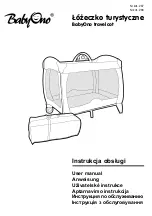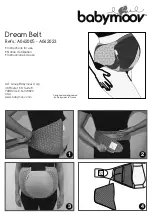
Revision 2.0
Paramount ME Homing Sensor Replacement and
Troubleshooting
This document describes how to access and remove the Paramount ME’s right ascension
and declination axis homing sensors.
The Paramount ME’s homing sensors work similarly to the optical sensors on automatic
garage door openers. While a garage door is closing, a break in the light path of the
optical sensor that is mounted near the floor causes the motor to reverse directions.
Likewise, as the right ascension and declination axes rotate during the homing process, a
strip of aluminum machined into the mounts internal gearing breaks the homing sensor’s
optical path so that the control system knows the axis is at a fixed orientation, called the
home position.
During the homing process, if the homing sensor on either axis is not functioning, the
control system cannot find the home position and will continue slewing until a limit
position is reached. At that point, the control system detects an error condition and
begins to beep continuously.
Failure to locate the home position can be caused by:
Any physical barrier, most commonly excessive grease after lubricating the
mount, blocking the optical sensor. Remove the impediment by cleaning the
homing sensor to restore functionality. See “Cleaning the Optical Sensor” on
page 10 for details.
The homing sensor cable connector becomes unseated or dislodged from the
MKS 4000 main electronics board and must be reseated.
Broken, damaged or shorted homing sensor wiring. The cables can be repaired,
or a replacement homing sensor cable assembly can be purchased from the
Software Bisque Store:
http://www.bisque.com/sc/shops/store/MKS4000HomingSensorCable.aspx
Most uncommonly, the optical sensor fails and needs replaced.
Required Tools
1 – 3/32 inch T-handle hex wrench
1 – 5/32 inch hex wrench
1 – 7/64 inch hex wrench
1 – 9/64 inch hex wrench
1 – 1/8 inch hex wrench
1 – Needle nose pliers
1 – Masking tape
































